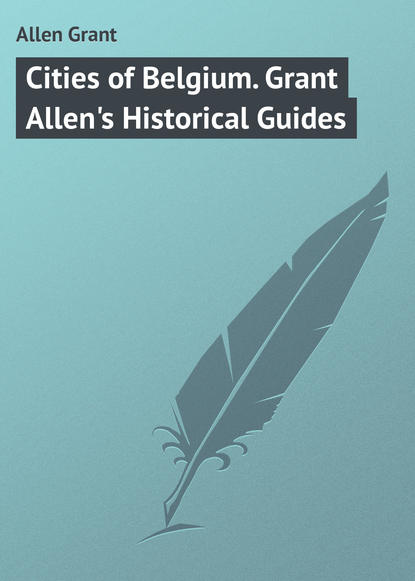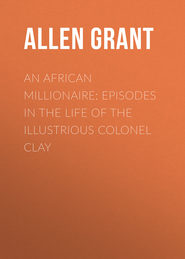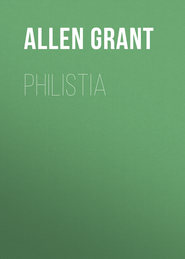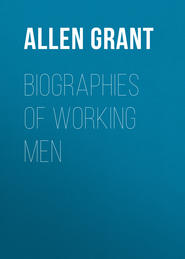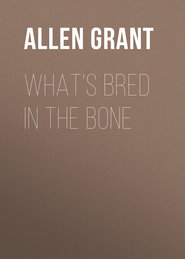По всем вопросам обращайтесь на: info@litportal.ru
(©) 2003-2024.
✖
Cities of Belgium. Grant Allen's Historical Guides
Настройки чтения
Размер шрифта
Высота строк
Поля
554. Also attributed to Roger van der Weyden: parts of the same series, Way to Calvary and the Crucifixion. The first has the usual brutal soldiers and a suffering but not very dignified Christ. (Study for comparison with others.) Beside the Virgin kneels the donor. The second has the conventional figures of the fainting Madonna, St. John, the Magdalen, and the other Maries: sun and moon darkened. In the distance of both, Flemish towns. (Good trees and landscape.)
105a. Fine Madonna with Child, and an apple by Van Clìve.
159. A crowded Calvary of the German School (late 15th century) with an emaciated Saviour, writhing and distorted thieves, and rather wooden spectators. Observe the St. Longinus in armour on the bay horse, piercing the side of Christ, for comparison hereafter with such later conceptions as Rubens’s at Antwerp. To the L. is the group of the Madonna, St. John, and the two Maries. The red eyes of St. John are characteristic of this scene, and descend to Van Dyck. The Maries are unmitigated German housewives. The Magdalen embraces the foot of the Cross. On the right are spectators and a brawl between soldiers. The background is full of characteristic German devils and horrors: also St. Veronica, Peter and Malchus, Judas hanging himself, etc.
Above it, 523, German School, attributed to Wolgemut, Christ and the Apostles: gold background. Very flavourless: shows the tendencies from which the Van Eycks revolted.
517. Roger van der Weyden: head of a Woman Weeping. Perhaps a portion of a large composition, or a study for one. More likely, a copy by a pupil. Much damaged.
Now, return along the same wall, beyond the great Van Eyck in the centre.
335. Bernard van Orley (transitional). Triptych (sawn in two), with the Patience of Job inside, and Lazarus and Dives outside. In the centre panel, the house falling upon the sons of Job. In the background, Job and his comforters: his house in flames, etc. Left panel, the flocks and herds of Job driven off by the Sabeans, with Satan before the Almighty at the summit. Right panel, Job in his last state more blessed than formerly: his comforters ask him to intercede for them. Beyond this again, the outer shutters (the panels having been sawn through): extreme left, Lazarus at the Rich Man’s gate; above, his new-born soul borne aloft to Heaven. Below, cooks, servants, etc. Extreme right, the Rich Man dying, attended by his physician (compare the Dropsical Woman by Gerard Dou in the Louvre). Below, Dives in Torments (in a very Flemish Hell) calling to Lazarus. Above, Lazarus in Abraham’s bosom. This is a good characteristic example of the transitional period between the early and later Flemish art, greatly influenced by the Italian Renaissance. Van Orley travelled in Italy, and imitated Raphael in composition and drawing.
Beyond it, attributed to Roger van der Weyden, 553 (3 panels arbitrarily placed together). In the centre panel, two subjects. Left, the Nativity, elements all conventional: ruined temple, shed, ox and ass (extremely wooden), and St. Joseph in background. (He frequently bears a candle in this scene in order to indicate that the time is night.) Right, the Adoration of the Three Kings, old, middle-aged, young, the last a Moor. St. Joseph examines, as often, the Old King’s gift. Note his costume; it recurs in Flemish art. Left panel, Joseph of Arimathea with the Crown of Thorns, Nicodemus with the three nails, St. John, and the three Maries at the sepulchre. Right panel, Entombment, with the same figures: the Crown of Thorns and nails in the foreground. Great importance is always attached to these relics, preserved in the Sainte Chapelle, and at Monza, near Milan.
350. Patinier. Repose on the Flight into Egypt, with fine landscape background.
122. Cranach the Elder. Hard portrait of a very Scotch looking and Calvinistic Elder.
10. Amberger; German School, 16th century; excellent portrait of a gentleman; good beard.
569. Fine portrait of a man, by unknown artist. Flemish School, 16th century.
Above these, 618, Flagellation and Ascension, German School, with gilt backgrounds.
The skied pictures on this wall are only interesting as specimens of the later transitional period; when Flemish Art was aiming ill at effects unnatural to it.
Continue along the wall in the same direction.
By the door, 557, *portrait of Johanna of Spain (the Mad), mother of Charles V.: fine 15th century work.
531 and 532. Excellent old Flemish portraits.
Above these, 541, Scenes from the Life of the Virgin, with a donor. L., Nativity. Note the conventional elements. R., Circumcision. Above, Angel and patron saints.
557. *Portrait of Philippe le Beau, father of Charles V., companion to his wife opposite. Observe the collar of the Golden Fleece, and the united arms of Spain, Burgundy, etc., on his doublet. These portraits were originally the wings of a triptych.
544. A Holy Family and St. Anne, with the donor, a Franciscan monk, by a feeble imitator of Memling.
334. Tolerable portrait of a doctor, by Bernard Van Orley.
Next it, unnumbered, *Virgin and child. Gérard David. Our Lady feeds Christ with a characteristic Flemish wooden spoon.
348. Patinier, a painter chiefly memorable for his landscapes (of which this is a poor example). St. Jerome in the Desert, beating his breast with a stone before a crucifix. Beside him, his cardinal’s hat and lion. Not a good example of the master.
641. Holbein the Younger. Portrait of *Sir Thomas More.
Above, 575. Triptych, Flemish School, early 16th century. Centre panel, Miracle of St. Anthony of Padua and the Mule. (The Saint, carrying the Host, met a scoffer’s mule, which knelt till it passed.) Above, St. Bonaventura, attired as bishop, praying. These must be the chief objects of the donor’s devotion: they are also represented on the outer wings. Right and left, the donor (whose name was Tobias), with his personal patron, St. Raphael the Archangel (accompanying the young Tobias), and his wife, with St. Margaret and the Dragon. (For Tobias and the Fish, see Book of Tobit.)
174, skied, is a Last Judgment by Floris, also transitional and useful for comparison with others elsewhere. To R. and L., the Fall of the Damned and the Just Ascending recall early examples at Bruges.
534. Triptych of the Flemish School (Hugo van der Goes?); Centre panel, Assumption of Our Lady. Round the empty tomb are gathered the apostles; conspicuous among them, St. Peter with a censer, and St. James. Above, Our Lady taken up in a glory by Christ and the Holy Ghost, represented as like Him. In the background, her Funeral, St. Peter, as Pope, accompanying. Note the papal dress of St. Peter; St. James holds the cross as Bishop of Jerusalem. Left wing, the chief donor, accompanied by his guardian angel and two of the apostles, one of whom holds St. Peter’s tiara, as if part of the main picture. In the background, St. Thomas receiving the Holy Girdle from an Angel, a common treatment in Flemish art, though Italians make him receive it from Our Lady in person. (See my Guide to Florence.) Right wing, donor’s son and wife, with guardian angel. This triptych closely resembles No. 535 (which see later), except that that picture is in one panel, instead of three. I think 535 must have been painted first, and this taken from it, but made into a triptych; which would account for the unusual flowing over of the main subject into the wings.
419. Martin Schongauer (of Colmar, a German largely influenced by Roger van der Weyden), *Ecce Homo, painted like a miniature.
349. Patinier: another Repose on the Flight into Egypt. Observe persistence of the main elements. Notice in particular, as compared with the similar picture (350) close by, the staff, basket, etc., in the R. foreground.
546. School of Memling, perhaps by the master: a Bishop preaching: M. Fétis thinks, exhorting the Crusade in which Pope Nicholas V. wished to interest the princes of Europe after the fall of Constantinople.
621. School of Dürer: Fine and thoughtful portrait of a man, perhaps Erasmus.
Above it, 577, Flemish triptych (school of Van der Weyden) of the Adoration of the Magi, the elements in which will by this time be familiar to you. Right and left, Adoration of the Shepherds and Circumcision. The exceptional frequency of the subject of the Adoration of the Magi in the Low Countries and the Rhine district is to be accounted for by the fact that the relics of the Three Kings are preserved in Cologne Cathedral, and are there the chief object of local cult.
At the corner,
84 and 255, two good portraits by the German de Bruyn (early 16th cent.). Transitional: show Italian influence.
Between them, 619, unknown German, Wedding Feast at Cana. That you may have no doubt as to the reality of the miracle, a servant is pouring water into the jars in the foreground. He is much the best portion of the picture. Behind are Christ, St. John, and Our Lady. Next to them, the bride and bridegroom. (Compare the Gerard David in the Louvre.)
Above it, 624, a very quaint St. George and St. Catherine, early German School, with gold background. St. George is stiffly clad in armour, and painfully conscious of his spindle legs, with a transfixed dragon and broken lance at his feet. St. Catherine looks extremely peevish, with a Byzantine down-drawn mouth: she holds the sword of her martyrdom, and has a fragment of her wheel showing behind her. Her face is highly characteristic of the severity and austerity of early German art. Companion piece (624) at opposite corner.
Now proceed to the next wall.
539. Fine portraits of a donor and his wife, with their patron saints, Peter and Paul. The tops of both have been sawn off.
549 and 643. Two Madonnas. Not very important.
545. Between them, **unknown German Master (Lafenestre says, Flemish). Panel with Our Lady and Virgin Saints, what is called a “Paradise Picture,” apparently painted for a church or nunnery in Cologne, and with the chief patronesses of the city churches or chapels grouped around in adoration. Our Lady, with her typical German features, sits in front, in a robe of blue, before a crimson damask curtain upheld by angels. Her face is sweetly and insipidly charming. She holds a regal court among her ladies. In front of her kneels the Magdalen, with her long hair and pot of ointment. To the L., St. Catherine of Alexandria, crowned as princess, and with her wheel embroidered in pearls on her red robe as a symbol. The Infant Christ places the ring on her finger. Further L., St. Cecilia with a bell, substituted in northern art (where the chimes in the belfry were so important) for the organ which she holds in Italy. Then, St. Lucy, with her eyes in a dish, and St. Apollonia, holding her tooth in a pair of pincers. In front of these two, in a richly brocaded dress, and beautiful crown, St. Ursula, the great martyr of Cologne, with the arrows of her martyrdom lying at her feet. To Our Lady’s right, St. Barbara, in a purple robe trimmed with ermine and embroidered with her tower (of three windows), offers a rose to the Infant. Her necklet is of towers. As usual in northern art, she balances St. Catherine. Beside her kneels St. Agnes, in red, with her lamb, and her ruby ring: beyond whom are St. Helena with the cross (wearing a simple Roman circlet), St. Agatha, holding her own severed breast in the pincers, and St. Cunera with the cradle and arrow, one of the martyred companions of St. Ursula. In the background, the True Vine on a trellis, the garden of roses (“is my sister, my spouse”), and a landscape of the Rhine, in which St. George kills the dragon. This is a particularly fine composition of the old German School.
65 and 66. **Dierick Bouts: Two companion panels, life-size figures, known as the Justice of the Emperor Otho, and painted for the Council-Room of the Hôtel-de-Ville at Louvain, as a warning to evil-doers, perjurers, or unjust magistrates. (Compare the Gerard David of the Flaying of Sisamnes in the Academy at Bruges.) It is first necessary to understand the story. During the absence of the Emperor Otho in Italy (according to tradition), his empress made advances to a gentleman of the court, who rejected her offers. Piqued by this rebuff, the empress denounced him to Otho on his return as having attempted to betray her honour. Otho, without further testimony, had the nobleman beheaded. His widow appeared before the Emperor’s judgment-seat, bearing her husband’s head in her hands, and offered to prove his innocence by the ordeal of fire. She therefore held a red-hot iron in her hand unhurt. Otho, convinced of his wife’s treachery by this miraculous evidence, had the perjured empress burned alive. The first panel, to the R., represents the scene in two separate moments. Behind, the nobleman, in his shirt and with his hands tied, walks towards the place of execution, accompanied by his wife in a red dress and black hood, as well as by a Franciscan friar. In the foreground, the executioner (looking grimly stern) has just decapitated the victim, and is giving the head to the wife in a towel. The headless corpse lies on the ground before him. The neck originally spurted blood; flowers have been painted in to conceal this painful element. All round stand spectators, probably portraits of the Louvain magistrates, admirably rendered in Bouts’s dry and stiff but life-like manner. Behind them, within a walled garden belonging to a castle in the background, stand the Emperor with his sceptre and crown, and the faithless Empress. Good town and landscape to the L. The second panel, to the L., separated from this by a large triptych, represents the nobleman’s wife appearing before the enthroned Otho. In her right hand she holds her husband’s head; with her left she grasps the red-hot iron, unmoved. The brazier of charcoal in which it has been heated stands on the parti-coloured marble floor in the foreground. Around are several portraits of courtiers. Behind is represented the scene of the empress burning, which closes the episode. I need not call attention to the admirable painting of the fur, the green coat, Otho’s flowered red robe, the dog, the throne, and all the other accessories. This is considered Dierick Bouts’s masterpiece. (Go later to Louvain to complete your idea of him.)
Between these two pictures are arranged five of the finest works in the collection.
292 and 293. Memling: **Portraits of William Moreel (or Morelli), Burgomaster of Bruges, and his wife Barbara, the same persons (Savoyards) who are represented in the St. Christopher triptych in the Academy at Bruges. Their daughter is the Sibyl Sambetha of the St. John’s Hospital. Both portraits, but especially the Burgomaster’s, are good, hard, dry pictures.
515. Memling: **Triptych: perhaps painted in Italy (if I permitted myself an opinion, I would say, doubtfully by Memling). At any rate, it is for the Sforza family of Milan. Central panel, the Crucifixion, with Our Lady and St. John. Beautiful background of a fanciful Jerusalem. Sun and moon darkened. In the foreground kneel Francesco Sforza in armour, his wife Bianca Visconti, and his son Galeazzo-Maria. Behind the duke, his coat of arms. Left panel: the Nativity. In the foreground St. Francis with the Stigmata, as patron saint of Francesco, and St. Bavon with his falcon. Right panel: St. John the Baptist, as patron saint of Giovanni Galeazzo. Below, St. Catherine with her sword and wheel, and St. Barbara with her tower, two charming figures. I do not know the reason of their introduction, but they are common pendants of one another in northern art. You can get an attendant to unfasten the outer wings of the triptych for you, but they are not important. They contain, in grisaille, L., St. Jerome and the lion; R., St. George and the dragon. (The presence of St. Bavon in this enigmatic picture leads me to suppose it was painted for a church at Ghent. But what were the Sforza family doing there? Perhaps it has reference to some local business of the Sforzas in Flanders.)
190. **Roger van der Weyden: Portrait of Charles the Bold of Burgundy, wearing the Golden Fleece. An excellent and characteristic piece of workmanship. The arrow has a meaning: it is the symbol of St. Sebastian, to whom (as plague-saint) Charles made a vow in illness, and whom ever after he specially reverenced.
294. Memling: **Portrait of an unknown man, which may be contrasted for its comparative softness of execution with the harder work of his master beside it. Above these: —
211. Triptych, by Heemskerck (early Dutch School), representing, Centre, the Entombment, Christ borne, as usual, by Nicodemus and Joseph of Arimathea. In front, the crown of thorns. Behind, the Magdalen; then the Madonna and St. John, the two Maries, and an unknown man holding a vase of ointment. L. and R. the donor and his wife, with their patron saints Peter and Mary Magdalen (keys, box of ointment).
542. *Dierick Bouts of Louvain: The Last Supper. A fine and characteristic example of the town painter of Louvain. The faces are those of peasants or small bourgeois. To the right are the donors, entering as spectators: their faces are excellent. Judas sits in front of the table. The Christ is insipid. Note the admirable work of the pavement and background. The servant is a good feature. If you have Conway with you, compare this picture with the engraving of the very similar one by Bouts at Louvain, (p. 277:) only, the architecture there is Gothic, here Renaissance.
139. *Descent from the Cross (Van der Weyden or his school). Notice the white sheet on which the body is laid, as later in the great Rubens. Nicodemus and Joseph of Arimathea support the body, St. John and one of the Maries holds the fainting Madonna. Left, the Magdalen, with her long hair. By her feet, her box of ointment. Close beside it, the nails, hammer and pincers. (M. Lafenestre, following Bode, attributes this picture to Petrus Christus, but with a query.)
29. Pleasing transitional Madonna, School of Van Orley, somewhat Italian in feeling, in a pretty arcade, with nice landscape background.





